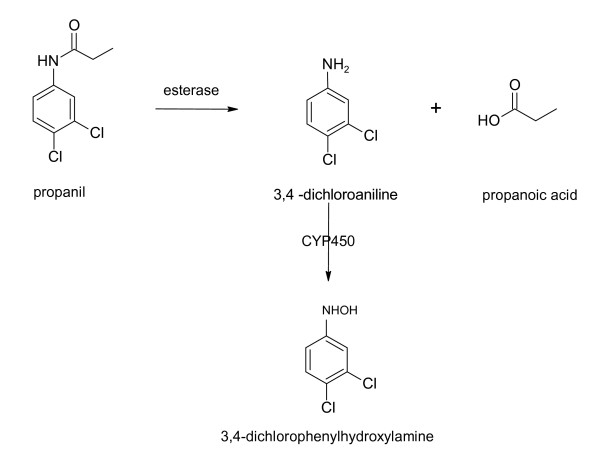Figure 1.
Metabolism of propanil in vivo, including the clinical toxicity associated with each metabolite. [11-15]*. * Propanil (CAS No. 709-98-8) is also classified as a chloroaniline herbicide and known as DCPA, propanide and N-(3,4-dichlorophenyl)propanamide. It is stable in solution at pH 3 – 9 but may be subject to hydrolysis to 3,4-dichloroaniline and propionic acid outside this range, although this has been debated. If hydrolysis occurs to a significant extent in the acid medium of the gastrointestinal tract there may be a diminished importance for esterases for metabolism of propanil. The specific esterases that hydrolyse propanil to DCA have not been identified but are known to be inhibited by paraoxon and sodium fluoride. A minor metabolite of CYP450 oxidation of DCA is 6-hydroxy-dichloroaniline which is less toxic.[13].

